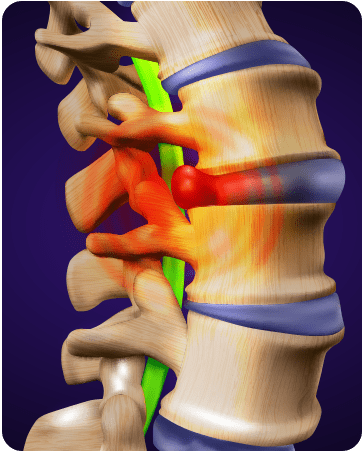In this modern era, most of our everyday tasks demand prolonged sitting, hunching over the screen, or lifting heavy objects. It seriously affects the health of the spine. One of the serious issues that most people experience due to these habits is a disc bulge. Initially, the person will not feel any symptoms, but as the pressure increases on the nerves, they may start feeling pain in the neck, shoulders, arms, hands, or legs, weakening or numbness in muscles, and balance issues while walking. These are mild symptoms that may go away with time, but in cases of severe pain, the person must seek professional advice for disc bulge treatment.
Various factors contribute to this situation, and one of them is poor posture. There is an intricate relationship between poor posture and disc bulge. Let us understand how maintaining good posture can help in disc bulge treatment and how it helps in overall recovery and prevention of future complications.
Understanding Disc Bulge
A disc bulge is a condition when the inner part of the spinal disc expands and extends beyond the outer wall. The extended portion presses the nearby nerves, resulting in pain, numbness, and weakness in the affected area. Common causes of disc bulge include a sedentary lifestyle, poor posture, regular smoking, obesity, strain or injury to a spinal disc, and age-related degeneration, which may lead to spinal osteoarthritis.
The Role Of Posture
Maintaining proper posture while walking, sitting, standing, or lifting heavy objects plays a pivotal role in managing disc bulges. Poor posture puts unnecessary pressure on the spinal disc, leading to further protrusion of the existing bulge. Maintaining correct posture helps distribute the weight evenly across the spine while minimizing excessive stress on specific vertebrae, resulting in no disc bulges or pain.
The Hazards of Improper Lifting Forms
You might have experienced that while lifting something heavier, you feel a sudden pain in your back. It is due to the improper lifting technique that exerts excessive strain on the spine, resulting in disc bulges. When lifting heavy objects, many individuals fail to engage their core muscles or bend from the knees, which increases pressure on the intervertebral discs, resulting in improper spinal alignment. To maintain proper posture while lifting, make sure you keep your chest forward, lead with your hips, and keep the item as close as it can be to the body.
The Hazards Of Improper Sitting Positions
It may be surprising for many people to know that sitting puts more pressure on the spinal disc than standing. In addition to that, many people do not even sit properly and slouch forward while working. Sitting like this for an extended period increases the risk of disc bulge. To avoid this condition, always sit upright with the shoulders back, supporting the spine’s natural curve.
Conclusion
In summary, good posture during lifting, sitting, standing, and walking is critical to optimizing the results of disc bulge treatment. Before choosing surgery, take guidance from top healthcare centers, like ANSSI Wellness, for non-surgical disc bulge treatment and stay away from the complications of surgery.

